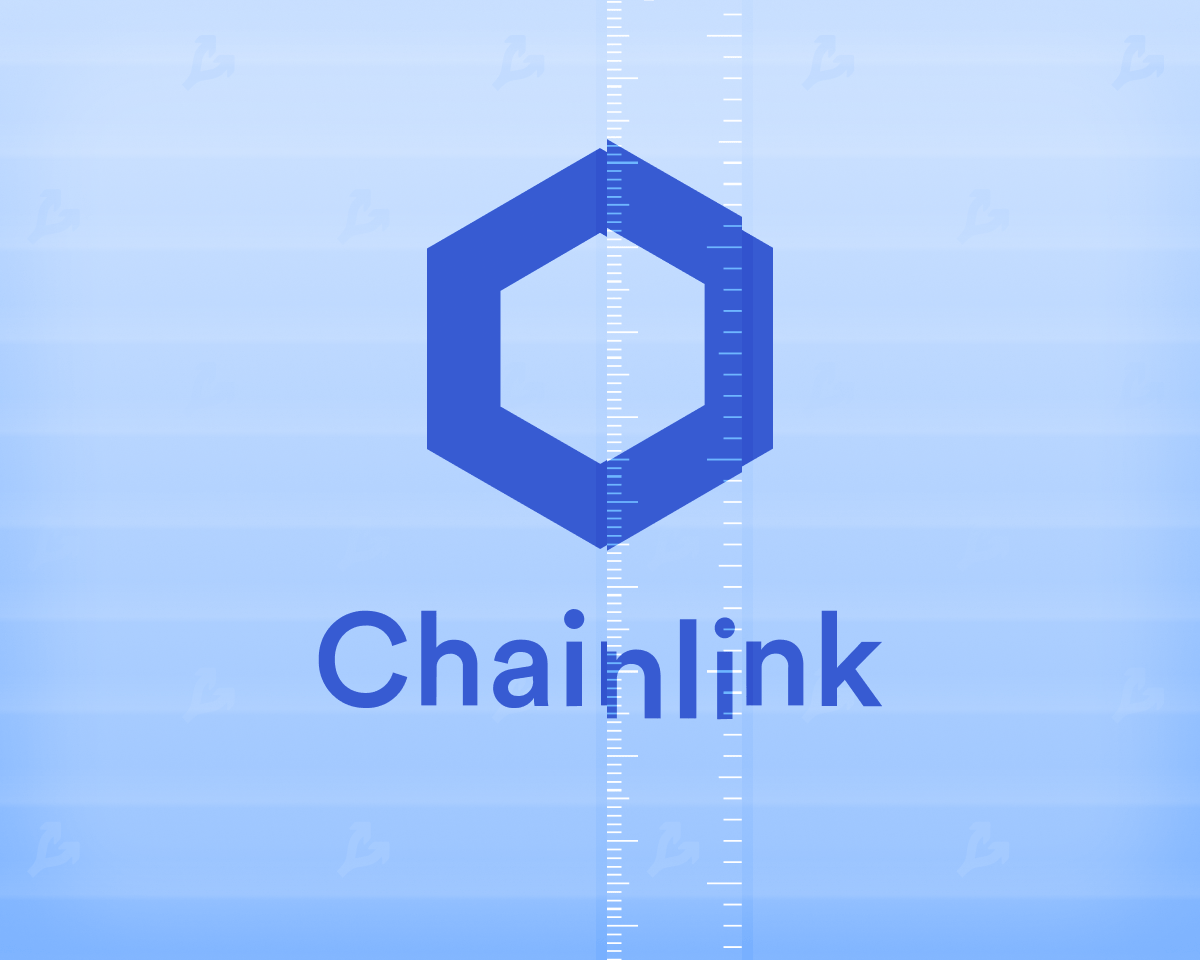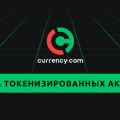
the main thing
- Chainlink is a decentralized network of oracles that verify and provide data fromexternal sources for smart contracts in the blockchain.
- Chainlink is the largest providerdecentralized oracles in the crypto industry. The technology is especially in demand in the field of decentralized finance. Also, oracles are used by large companies that are not associated with the blockchain.
- LINK is the native token of Chainlink. It is mainly used to pay for the work of node operators, on the basis of which oracles work.
Who created Chainlink and when?
Chainlink was created by Sergey Nazarov and SteveEllis. The project first became known in 2017, when Nazarov and Ellis released a white paper. Chainlink officially launched in 2019. The basis of the project was the technology of decentralized oracles based on nodes.
It was developed in collaboration with Prof.Cornell University Ari Jewels. Now he, along with the founders and other team members, works at Chainlink Labs, whose main task is to develop the protocol and architecture of the project.
What problem do oracles solve?
Smart contracts are needed for workdecentralized applications, but some business models require data outside the blockchain. Delivery and verification of off-chain data for the execution of a smart contract was one of the main problems.
Initially, oracles were responsible for this, but theywere unreliable and centralized: their work was often controlled by the creator, and such an oracle used only one source of information. All this created the possibility of a “point of failure” and put the users of the smart contract at risk.
Example - transactions using instantloans. The centralization of data—in this case, the prices of cryptoassets—has led to the possibility of a smart contract exploit. Thanks to this, in 2020, a hacker stole almost $1 million worth of cryptocurrencies from the bZx protocol, which was used by only one Kyber Network oracle.
The creators of Chainlink have improved the technology by introducing decentralized oracles. Their main feature is the absence of a single source of data and resistance to manipulation.
Smart contract connected to the Chainlink network,requests information from several oracles at once in order to obtain the most reliable data possible. For this reason, Chainlink decentralized oracles are also called consensus oracles.
How do Chainlink oracles work?
Chainlink is a network of oracles,which combines many nodes. A single node operator can deploy multiple oracles. In turn, each oracle can have multiple data sources.
Oracles use feeds of data aboutprices (Chainlink Price Feed). They allow smart contracts of decentralized applications to receive quotes of various cryptocurrencies from centralized trading platforms. This is necessary, for example, when exchanging one crypto asset for another through a decentralized exchange.
The system depicted above for delivering crypto asset price data through Chainlink oracles consists of three levels:
1. Well-known aggregators - CoinGecko, CoinMarketCap, Cryptocompare and others. Those, in turn, receive data directly from exchanges and other trading platforms.
2.Aggregator values are passed to Chainlink nodes. They do not produce blocks, but process requests and manage oracles. Upon receiving a request, the Chainlink network selects a random set of suitable oracles. They receive the requested data from relevant external sources and pass it on to Chainlink.
Chainlink nodes are divided into two types: Core - accept requests from users, and Adapter - act as a "bridge" between the node and an external data source.
3.The data received by the oracles is compared and matched by a special Chainlink Aggregating Contract. When the nodes reach a consensus on a response, a single value is passed to the destination, the smart contract of the decentralized application that sent the original request.
What data can Chainlink oracles supply?
Decentralized oracle technology is comingnot only for cryptocurrencies and finance. For example, in the summer of 2021, Chainlink announced a partnership with the popular weather forecast service AccuWeather. As part of the collaboration, the platform delivers its data to decentralized oracles via Google Cloud.
This partnership, in turn, allowedChainlink to attract another client. In the spring of 2022, the American insurance platform Lemonade, along with several blockchain projects, launched a new climate risk insurance service for farmers. Instead of a regular policy, the buyer of insurance acts as a participant in a smart contract connected to the Chainlink oracle.
In April 2022, DeFi firm Truflationused Chainlink oracles to create its own U.S. Consumer Price Index (CPI). Unlike the official index, which is calculated by the government, Truflation uses an alternative calculation method, and Chainlink is responsible for the sources and reliability of the information.
What other services are there in Chainlink?
Chainlink oracles are capable of performing various functions that have a wide range of applications:
- Tested Random Function (VRF).For each request, Chainlink VRF generates one or more random numbers and its cryptographic confirmation. VRF is used in application contracts where a random outcome based on a certain formula is important, in particular in blockchain games and NFTs. The first game to use VRF was PoolTogether.
- API Integration - The Chainlink system provides smart contracts with the ability to connect to external data sources, including APIs.
- Automation of smart contract functions and their regular maintenance with the help of "custodians" (Chainlink Keepers).
What blockchain does Chainlink run on?
Chainlink does not have its own network.The nodes of the project operate on the basis of blockchains, the applications of which they serve. Initially, Chainlink was launched on the basis of Ethereum. The project’s oracles currently operate on the Solana blockchain and Ethereum virtual machine compatible networks, including BNB Chain, Arbitrum, Optimism, Polygon, Avalanche, and Fantom.
Which companies and projects use Chainlink oracles?
As of June 2022, the project ecosystem includes more than 1300 projects.
Chainlink oracles use leading DeFi protocols: Aave, Ampleforth, bZx, Celsius Network, Loopring, Polkadot, Synthetix, Lido and others.
In February 2022, Bank of America named the projectChainlink is one of the main reasons why DeFi is growing. At that time, the oracles of the project were involved in DeFi applications, the share of which in the total TVL of the entire DeFi sphere exceeded 59%.
“The adoption and growth of DeFi [in 2021] has beenare driven by the ability of hybrid smart contracts [Chainlink], or self-executing and tamper-resistant digital agreements, to provide reliable and secure access to real-world data such as market prices, time of day, weather, and GPS coordinates through oracle nodes,” reads the statement. bank report.
Among Chainlink node operators managingoracles, many large enterprises: the Swiss telecom operator Swisscom, the German company Deutsche Telekom, and the Associated Press (AP) news agency.
What is Chainlink 2.0?
At the beginning of 2021, the developers publishedwhite paper called Chainlink 2.0. The authors of the document focused on the development of so-called hybrid smart contracts, as well as new ways to use Chainlink oracles to get other opportunities on the network.
According to Chainlink co-founder Sergey Nazarov, the main characteristic of hybrid smart contracts is the combination of code running on the blockchain with data and calculations outside of it.
Chainlink also plans to launch CCIP(Cross-Chain Interoperability Protocol) is a cross-chain interoperability protocol, a global standard for messaging and communication between blockchains. CCIP aims to fulfill the task that TCP/IP has done for the Internet - to create a single "Internet of Blockchains".
What is the LINK token for?
LINK — Chainlink project token issued on the Ethereum blockchain. Included in the TOP 50 cryptocurrencies by capitalization. LINK emission is limited to 1 billion tokens.
The crypto asset is needed to pay for the workoracles and is an economic incentive for node operators. LINK is also used to improve the accuracy of data processing and maintain the stability of contracts on the network.
After the launch, Chainlink began to quickly gainpopularity, and its token increases in price. In 2020 alone, the price of LINK rose by several hundred percent. Chainlink also has an active community - “LINK marines”, who actively promote the project on social networks.
At the same time, observers noted a high share of LINK concentration: at the beginning of spring 2021, 81% of the entire issue was concentrated in 1% of holders.
In May 2021, the price of LINK peaked after the publication of white paper 2.0, but then began to decline. As of early June 2022, the asset is worth about $8.
In 2022, the project plans to launch token staking. So far, the developers have not revealed the exact launch date.
What incidents are associated with the project?
What else to read?
What is Decentralized Finance (DeFi)?
What is DAO?
What are Flash Loans (instant loans)?
What are ERC-20 tokens?
What is Uniswap?





